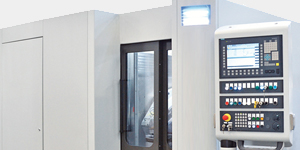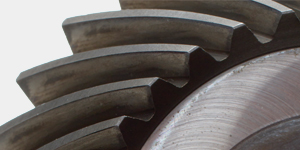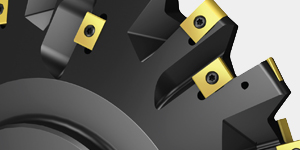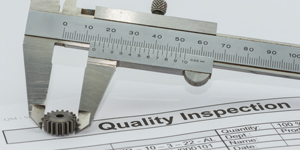When a crane is operating, it’s crucial the crane’s weight doesn’t cause it to run away. In solar tracking, it’s necessary that wind events don’t force the gearbox to rotate backwards.
Worm drives play an important role in ensuring these events don’t occur, and Kinematics has been making specialized worm gears — and more — for almost 30 years.
“Our primary products are worm drives,” said Kyle Zech, COO at Kinematics. “In addition, the majority are self-locking designs. Most of the industries we work with need low-speed, highly loaded gearing, and the ability for the gearing to self-lock when not in motion. We also offer products for applications that require overrunning worm gear designs or spur gear sets — but primarily ours are low-speed and highly loaded, and we strike the perfect blend of performance and value.”

Actuator technology
A good portion of Kinematics’ expertise with gears has evolved into working with key elements of the solar-energy industry — specifically, when it comes to single-axis and dual-axis actuators, precision gear mechanisms that enable solar trackers to rotate and position panels throughout the day. By allowing panels to follow the sun’s path across the sky, these systems increase energy production by up to 15 to 20 percent compared to fixed-tilt installations.
Zech said Kinematics discovered the company’s products would be ideal for solar tracking in the mid-2000s.
“There were numerous opportunities that were a really good fit,” he said. “Our worm drives had direct compatibility into solar tracking.”
This led to the development of gearbox assemblies specific to solar tracking, according to Zech. During this development, the products evolved naturally with what Kinematics was already producing.
“By doing so, we were able to reduce the size of the product, lower cost, improve performance, and standardize in specific areas so, by 2015, our volumes were beginning to significantly increase,” he said. “As the market matured, we developed more reliable products — even smaller products. Between the time I started here — which was December of 2011 — and now, our volumes have increased more than tenfold. We were producing approximately 40,000 units back in 2012. Now we make over 500,000 per year.”
As the solar market has advanced, it has equated to an increase in Kinematics’ business, according to Zech.
“Our company has changed significantly over that time,” he said. “And this is thanks to a rapidly growing solar tracking market; however, we still have a significant amount of business in satellite tracking and industrial mobile equipment such as cranes, aerial lifts, off-highway vehicle steering, and more.”

Customer relations
Part of what makes Kinematics unique is how it develops its relationships with its customers, according to Zech.
“Culturally, we’re values driven through innovation, teamwork, trust, agility, and customer success; we’re also growth driven; we prefer to select our customers; we want to establish real partnerships, not just transactional relationships,” he said. “When it comes to gearing technology, we consider ourselves experts in areas of mission critical, heavily loaded, low speed applications. We provide customized solutions that give our customers the adequate amount of performance at the value they require.”
That cultivation leads to long-term partnerships with Kinematics’ customers, according to Zech.
“Through our deep customer insight and technical expertise, we ensure we’re not just chasing transactional opportunities, but fostering meaningful, long-term value,” he said. “We have long-term partnerships with our customers, and we have a lot of them. There are customers we do business with today that were doing business with us 15 years ago.”
New acquisition
A recent acquisition by Kinematics is only making that relationship between company and customer stronger.
Earlier this year, Kinematics acquired P4Q. By integrating P4Q’s high-performance digital portfolio — including more than 1 million solar controllers deployed across 2,400 solar sites globally — with Kinematics’ installed base of 3 million solar actuators, the combined company is now the world’s largest supplier of motion control technology for solar trackers supporting more than 134 GW of solar installations worldwide, according to Zech.

The acquisition brings P4Q’s full-stack digital expertise into Kinematics’ portfolio, complementing its actuation systems. This acquisition also has enabled Kinematics to provide a complete solution for solar tracker motion technology, simplifying design integration and supply for solar tracker OEMs, enabling the most advanced tracking systems for future installations, and providing asset owners a path toward upgrading outdated systems.
“We’ve put a significant amount of investment into our operations in the last three years,” Zech said. “We continue to expand our capabilities and mature our supply chain to handle the growth, and the P4Q acquisition is a great example of this. We realized, if we could become more than just a supplier of hardware or gearboxes, we could deliver greater value to our customers, by offering a single, streamlined solution rather than requiring them to coordinate with multiple suppliers. It aligns warranties, terms and conditions, and support into a single transaction while giving customers a clear point of contact for all critical elements essential to the proper function of a solar tracker.”
Having this new ability added to Kinematics’ tool belt only serves to better solve a potential customer’s challenges — whatever they may be, according to Zech.
“One of the things we’ve done very well in the industry is the ability to customize around a customer’s needs,” he said. “We’ve gained significant market share over the years because customers needed to make a change to better fit their overall solution, while other suppliers simply want to sell a standard product. Whereas our approach is different: ‘Let’s look at the entire problem and solve it together.’”

3 million actuators
Kinematics’ customer-centric approach has proven to be a smart direction as it’s pushed the company to an impressive milestone — it recently shipped its 3 millionth actuator, according to Zech.
“It’s all of our actuators that we’ve sold in our history that have been fielded into application, and a large amount of that is solar, but it encompasses all of our markets,” he said.
Kinematics’ actuators are part of its hourglass worm gear technology, which engages more teeth simultaneously than conventional drives at higher drivetrain efficiency. This design delivers superior control and torque while providing robust survivability. Exceptional durability protects solar investments during extreme weather, while the self-locking capability eliminates the need for additional braking systems. For utility-scale developers, these advantages translate to reduced maintenance, longer system life, and higher energy production — even in the most challenging environments.
Continuing to grow
In addition to those milestones, the company has also expanded its operations in Mexico, reinvested in its factory in China, and added U.S. manufacturing, according to Zech.
“Our China facility had become dated, so we moved into a new building and automated it,” he said. “We’ve transitioned from a highly manual set of operations to advanced machining and robotics.”
Before many of Kinematics’ specialized products became reality, the company first opened its doors in 1996, founded by Brent Morgan, who had a history with gear manufacturing. In the beginning, the company manufactured winches. Eventually, Morgan developed assembly line products that could be sold complete to the end users for aerial lifts and cranes. The company gravitated to those industries until the early 2000s when tracking within the solar energy industry began to become more of a need.
Look to the future
Kinematics’ involvement in solar is expected to continue as the company looks to the future, according to Zech.
“Solar tracking will continue to be part of the equation, and it’s going to be a matter of: How does the market evolve significantly beyond where it is today?” he said. “In other markets, there is strong potential in our satellite communications positioners becoming a major part of our business, along with the development of new products in automation. We need to adapt to the market changes and expand beyond the slow, rotating, heavily loaded gearbox systems. Being able to offer fully integrated motion control solutions expands our capability significantly. Everybody’s trying to find ways to innovate, reduce dependency on labor, and increase productivity. Kinematics is staying at the forefront of that.”
About Kinematics
Founded in 1996, Kinematics is the leading provider of critical motion control solutions. From actuation technology to advanced algorithms, controls, and global support, the company provides a total solution that maximizes power production for the solar industry and improves reliability and safety for industrial and satellite applications. Kinematics supplies engineered systems, sensors, software, and services to move mission-critical equipment into precise position. The company is headquartered in Phoenix, Arizona, and operates globally with facilities in Asia, Europe, and the Americas.




























